Tax tokens of Oklahoma, USA
Oklahoma tax tokens, like other states, were used to pay sales tax on small
purchases where the tax was less than a penny.
Unlike most states, half of the sales tax went to a specific purpose - pension
provision for the elderly, and the tokens were also divided into regular and
"pension" ones.
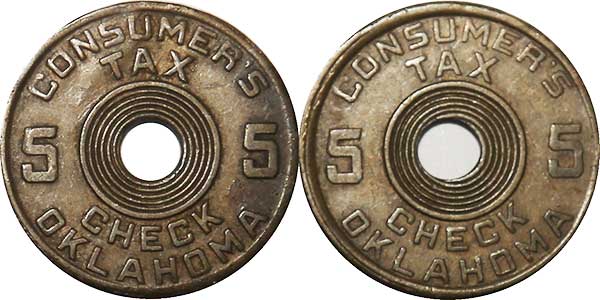
5 mill (1/2 cents)
23 mm., brass
1936
5 / 5 / COMSUMER TAX CHECK OKLAHOMA / Concentric circles around the hole
5 / 5 / COMSUMER TAX CHECK OKLAHOMA / Concentric circles around the hole
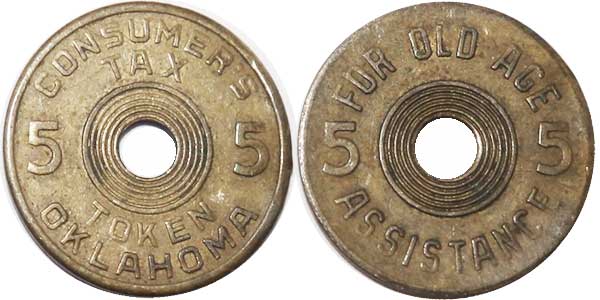
5 mill (1/2 cents)
23 mm., brass
1937-1941
5 / 5 / COMSUMER TAX TOKEN OKLAHOMA / Concentric circles around the hole
5 / 5 / FOR OLD AGE ASSISTANCE / Concentric circles around the hole
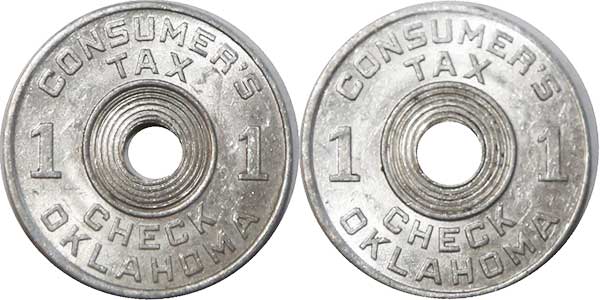
1 mill (1/10 cents)
23 mm., aluminium
1936
1 / 1 / COMSUMER TAX CHECK OKLAHOMA / Concentric circles around the hole
1 / 1 / COMSUMER TAX CHECK OKLAHOMA / Concentric circles around the hole
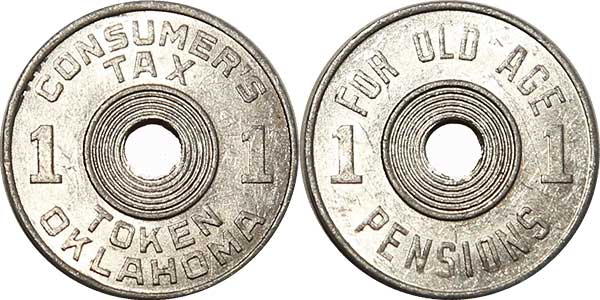
1 mill (1/10 cents)
23 mm., aluminium
1937-1941
1 / 1 / COMSUMER TAX TOKEN OKLAHOMA / Concentric circles around the hole
1 / 1 / FOR OLD PENSIONS / Concentric circles around the hole
On July 7, 1936, the Oklahoma Social Security Act was passed. To pay for the new
Social Security program, an additional 1% sales tax was imposed.
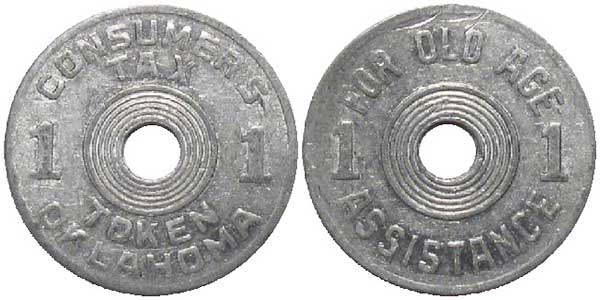
1 mill (1/10 cents)
23 mm., aluminium
1937-1941
1 / 1 / COMSUMER TAX TOKEN OKLAHOMA / Concentric circles around the hole
1 / 1 / FOR OLD AGE ASSISTANCE / Concentric circles around the hole
Oklahoma Tax tokens value
Oklahoma used aluminum, brass, and fiber tax tokens.
All metal tokens are very common and cost less than a dollar each.
A 1 mill aluminum tokens with "CHECK" on one side and "PENSIONS" on the other is
harder to find and can cost $50 or more.
Oklahoma fiber tax tokens are usually worth less than a dollar each. However, a
tokens with "SALES TAX" on both sides is much harder to find and costs more.
Fiber tokens come in two colors - an opaque light gray (costs a few dollars),
and a translucent ivory (costs about twice as much).
